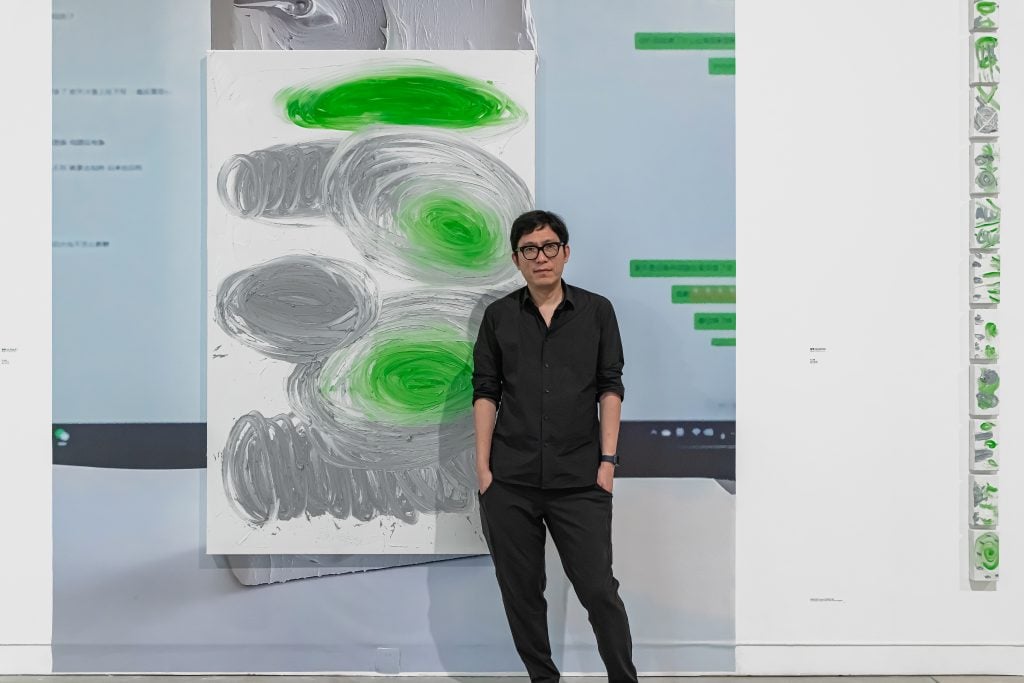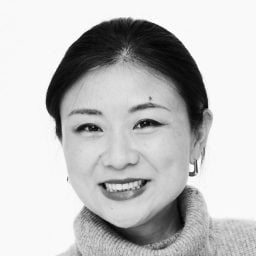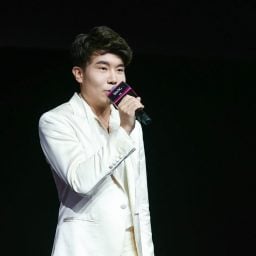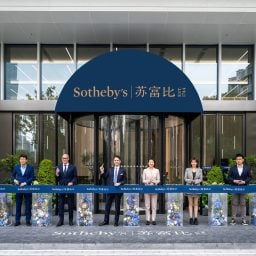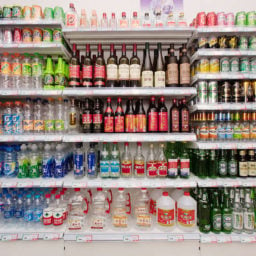The art prankster Xu Zhen—who gained notoriety for trademarking his name as a brand and is sometimes hailed as “China’s Maurizio Cattelan”—has, after a period of focusing on facilitating other artists’ careers, made a comeback with a new solo show, this time enthralling audiences at the G Museum in Nanjing with paintings of social media screenshots.
Situated on the 52nd floor, the museum space extends across all three skyscraper towers of Golden Eagle World, which also houses a colossal shopping mall and a luxurious hotel. The venue also provides a fitting backdrop to Xu Zhen’s exhibition. While Xu’s earlier works embraced politics and provocation—exemplified by his 2005 piece 12’91, a sculpture of a military tank with an exterior imprinted with hand and footprints—his focus has shifted towards critiquing China’s consumerist frenzy within the context of globalization. Combining diverse mediums like installation, photography, video, and performance, Xu delivers a playful synthesis of humor and subtle sarcasm.
Transforming the high-ceilinged galleries into a stunning display of both wall-scale and densely packed, smartphone-sized “social media screenshots,” Xu believes this series, titled “Passion,” encapsulates the essence of our present moment. “The pandemic and the resulting lockdowns have intensified our reliance on smartphones and social media,” Xu explained. This was especially apparent in the artist’s native Shanghai, which weathered strict lockdowns in pursuit of China’s zero-Covid policy. To produce the paintings, he extracts snippets of text from WeChat conversations and applies abstract brushstrokes to suggest the underlying sentiments and emotions of the text bubbles. Despite the smudged nature of the paintings, the familiar interface of messenger apps establishes an instant connection with viewers.
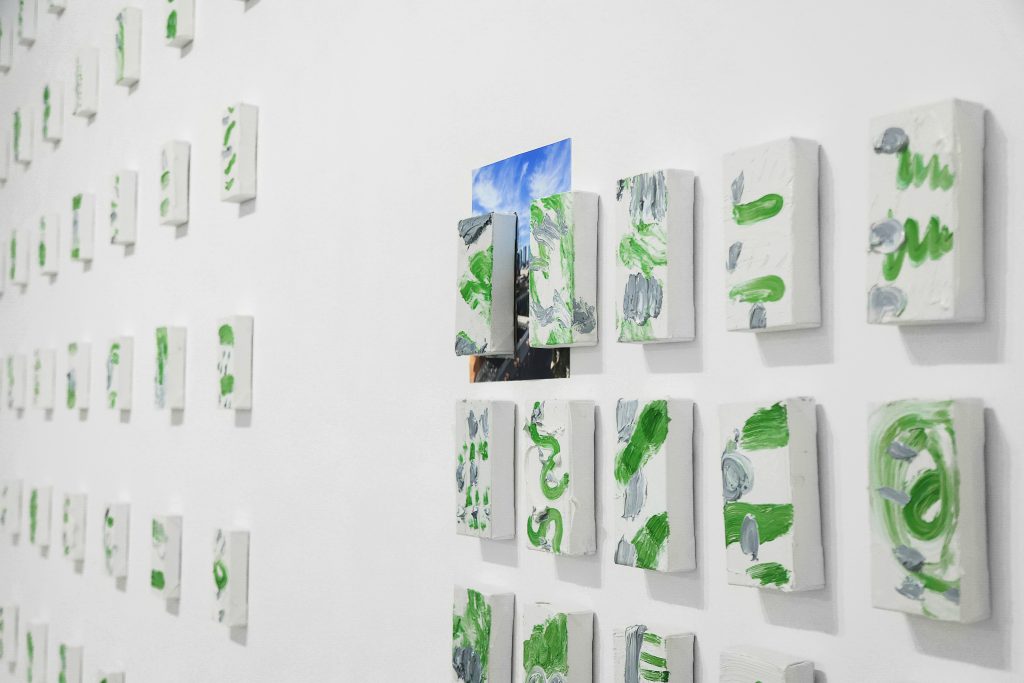
Installation view of Xu Zhen’s “Passion” paintings at G Museum, Nanjing.
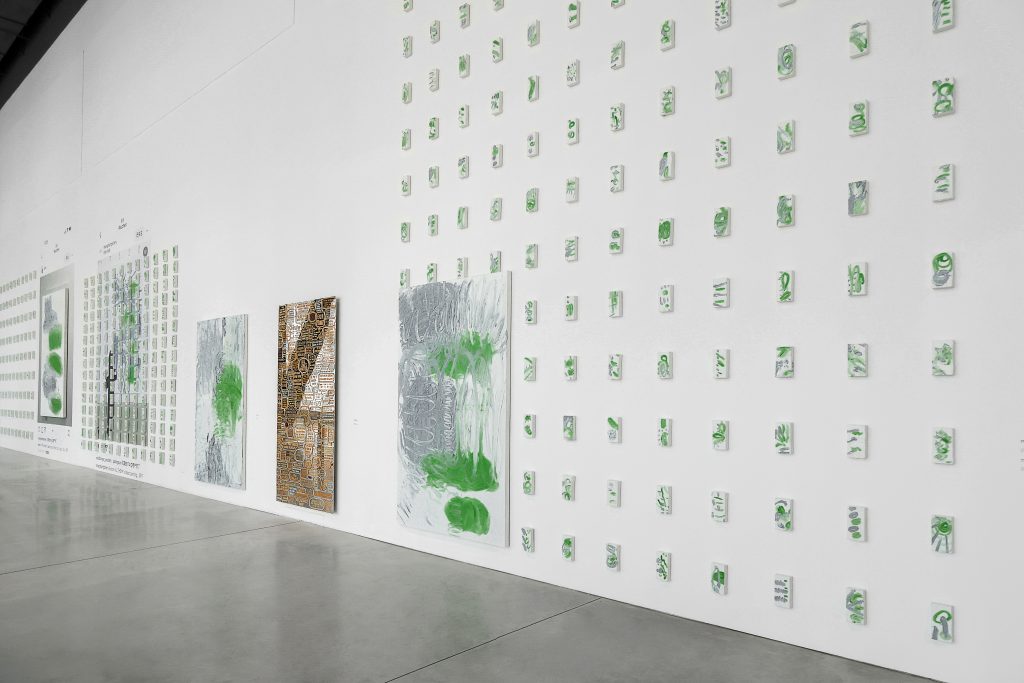
Installation view of Xu Zhen’s “Passion” paintings at G Museum, Nanjing.
Seen as the leading and the most representative artist among his post-1970s peers (a Chinese term that refers to individuals born in or after the 1970s), Xu Zhen rose to fame in his early 20s, becoming the youngest Chinese artist to participate in the 49th Venice Biennale in 2001 (and later returning for the 2005 edition). Xu has also made notable waves in the art market. In 2018, his artwork Xuzhen Supermarket (2016)—a storefront full of empty products—fetched HK$2 million at Sotheby’s Hong Kong, marking the first piece of conceptual art to be auctioned in Asia. Notably, this piece was sold under the brand XU ZHEN®, a deliberate move to subsume his own identity within his art-making company, MadeIn Company.
Xu also acts as his own gallerist while also collaborating with mega-gallery Perrotin. His entrepreneurial bent dates back at least to 1998, when he co-founded Shanghai’s first independent nonprofit organization, the BizArt Center. In 2006, together with fellow Shanghai artists, he founded Art-Ba-Ba (www.art-ba-ba.com), which remains one of China’s most vibrant online art publications. In 2014, he established MadeIn Gallery and launched the first “Xu Zhen Store.” Xu’s unconventional path to becoming a generalist did not stop there. His latest venture is the MadeIn Art Museum, located on Chongming Island near Shanghai. The museum repurposes abandoned buildings from the 1970s, deliberately rejecting white-cube interiors and challenging the process of gentrification that is a hallmark of China’s private art museum landscape.
We caught up with Xu Zhen prior to his G Museum opening and talked about his new paintings, his various ventures, and the distinctive experience of making them in China.
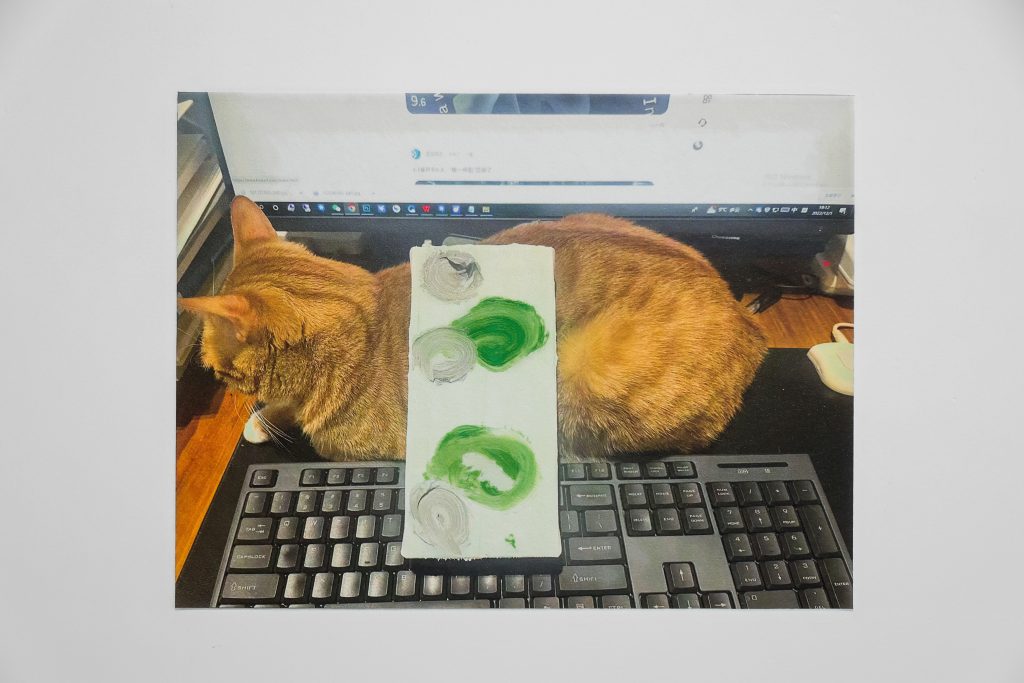
Xu Zhen has been giving away small paintings from “Passion” for the past year.
Your work is often playful and conceptual. How have your newest “Passion” paintings become a vehicle for circulation in your conceptual practices?
This series may appear as mere paintings at first glance, but it represents one of the most ubiquitous interfaces in our lives: the various social media platforms that fill our existence, much like the iconic Campbell’s Soup cans in Warhol’s era. I believe these “messenger screenshots” embody a highly representative image of our time. Our emotions and thoughts today often stem from this interface. Toward the end of 2021, amidst the pandemic, I started exploring the realm of painting in relation to these images. Since the “Passion” series revolves around gesture and expression, I channeled the emotions I experienced as a “readymade” while personally painting each of them. Over the course of the pandemic, whether due to strict measures or not, our reliance on social media seems to have intensified. Shanghai, for instance, underwent a three-month lockdown last year, significantly affecting our sensitivity toward various forms of information.
During that period, individuals were bombarded with a constant influx of information, resulting in an atmosphere of anxiety across social media. This series of works encapsulates my perception of modern communication and information dissemination. The left side of the artwork is depicted in shades of gray that stand for the messages one receives, while the right side is represented by a vibrant green as a sign of the messages one sends, embodying the mood of a conversation. In many ways, our need for emotional support, as manifested in our reliance on social media, resonates with the emotions we observe in Abstract Expressionist paintings. That’s why I characterize this series with an impassioned, benevolent, and authentic sentiment.
I’m interested in the idea of omnimedia, which means that multiple ideas can be conveyed through different media, and these various media, in turn, contribute to the subject matter or the idea itself. In the case of the “Passion” series, I placed approximately 1,200 to 1,300 small paintings on the gallery walls, akin to the notion of the data cloud. A dialogue can be observed between shades of gray and green, reflecting the diverse range of emotions we encounter on our screens. As the quantity of these paintings reaches a certain threshold, they form a collective cloud. Whereas a data cloud is typically associated with intangible and virtual elements, the medium of painting enables us to perceive and touch this virtual concept. Here lies the uniqueness of the pictorial language that other mediums may struggle to replicate or replace.
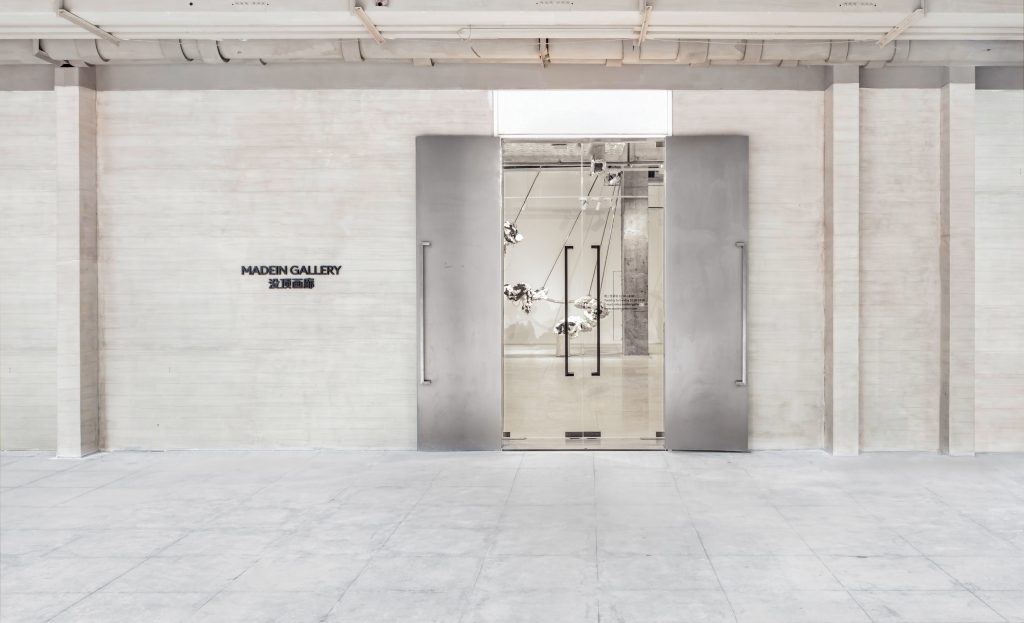
MadeIn Gallery, front view.
You were the very first artist in China to form a company to sell artwork under your brand rather than your name. Later you became a gallerist and a museum founder. How did you become such a generalist in the art world?
I began my artistic career at a relatively young age, around 19 or 20 years old. Back then there was a period of “China fever” in the global art world that lasted until around 2007, during which time I found young artists like myself participating in exhibitions abroad almost every year. It seemed that the international community had a certain perception about China, and as an artist in the industry, I felt a certain obligation to cater to that perception. After actively working in the field for five or six years, I felt like I was becoming a representative of contemporary young Chinese artists—a label that was difficult to shake off. This led me to believe that contemporary art should not be so simplistic or full of routines.
I was also involved in running a nonprofit organization, BizArt Center, in Shanghai. For ten years, my colleagues and I curated numerous exhibitions and engaged in art media operations. The exposure to a wide range of practices gave me a deeper understanding of the constraints and limitations imposed on artists within the industry. I was prompted to rethink whether there were more possibilities for artists to explore. That’s when we decided to establish a brand and company model. Our primary motivation was to create a platform that provided freedom for artistic expression and enhanced efficiency. Subsequently, we established MadeIn Gallery in 2014, which has to date presented 50 to 60 exhibitions and supported 30 to 40 young artists. I like the efficiency. And this is a truly creative approach that is well suited to contemporary Chinese society in the context of globalization.

Xu Zhen, Xuzhen Supermarket (2016), in Shanghai’s Yu Yuan Lu.
Courtesy of Xu Zhen®.
Company and brand operation is essentially a business. So how does this business perform so far? How do you manage the gallery business as an artist yourself?
For the transaction—the artist’s price or market positioning—our approach is based on the premise that artistic creation should be interesting, of academic value, and sustainable for the artist and the market. We want a relatively benign market. We won’t have artists that are priced like a roller coaster.
As an artist myself, I have a clear understanding of how to select them. We look for artists who possess a distinct artistic style, innovative language, and the possibility of epochal significance. Sustainability is the main concern here. One of my roles as the owner is to ensure that the artists are truly “contemporary.” My experience in running a nonprofit organization helped me to work closely alongside artists with greater empathy. It also helped me to initiate or engage in conversations with them on art-making. I hope to spare young artists from some of the difficulties I have gone through. On the other hand, my team tends to work more on lending resources and focusing on the market aspects.
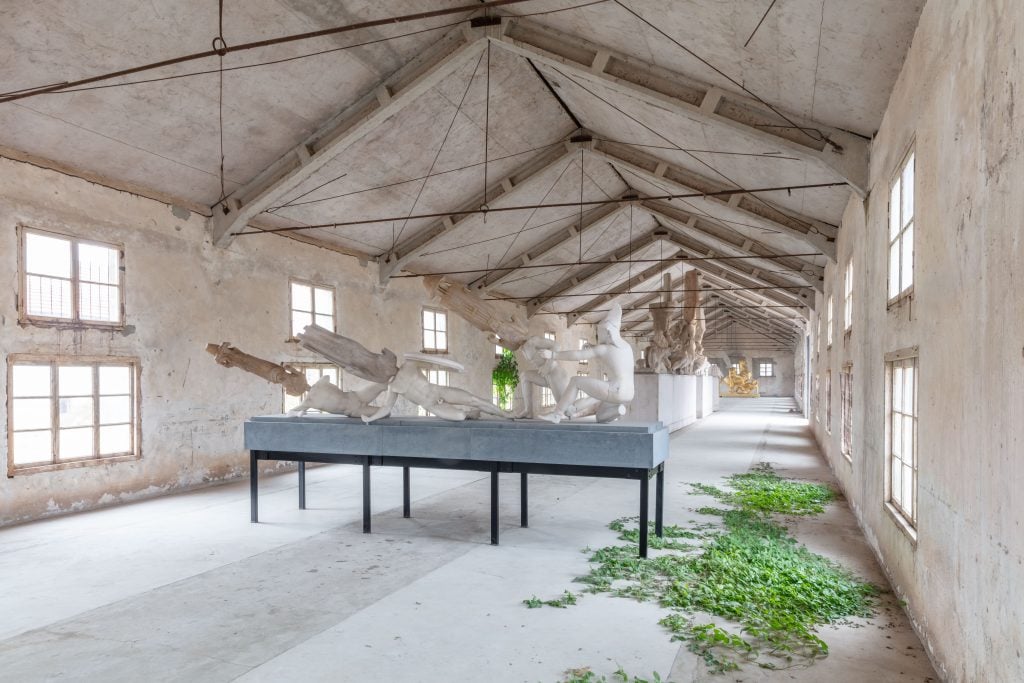
Installation view, “XU ZHEN®: Embracing Chaos 1.0,” at the MadeIn Art Museum, 2022.
In the last two years, you established MadeIn Art Museum on an island quite remote from the epicenter of Shanghai’s art scene, and it also has an “anti-gentrification” hipster aesthetic. Were you deliberately breaking the systematic ecology of the Chinese art world?
MadeIn Art Museum has been one of my slowest endeavors. I had been engaged in various art projects on Chongming Island before, collaborating with the local government on land art festivals. Around four years ago, by a stroke of luck, I was introduced to this former chicken farm and was so impressed as to think about how to repurpose it. I knew there was a typical notion of what an art museum should be, but for me, art museums today are almost “living in the media.” Due to personal reasons, I have not traveled abroad since 2005 and have mostly stayed in Shanghai. The internet has become my primary source of information. Additionally, there is a growing presence of art online. The internet has also led to many painters adopting a color scheme suitable for screens. Then there is also the influence of fast, TikTok-like video clips. The contemporaneity in contemporary art today is fragmented, fluid, and characterized by sudden shifts. That’s why I’d say that at least half of today’s art museums exist within the realm of such media. I no longer feel entirely comfortable with gentrified aesthetics or museum architecture that is overly focused on design. I found it challenging to identify an architectural style that aligns with the contemporary nature I envisioned. After much deliberation, I decided to work with the existing site—a dilapidated factory building from the collectivist era, nestled amidst a primitive yet ever-changing vegetation system.
Considering China’s unique environment and social situation, is making art museums the most complicated thing you have done? What is your vision for the museum?
It’s fine for me now. In today’s China, you need a big heart to stay in business in this political and social context—you have to have resiliency. When it comes to the MadeIn Art Museum, our goal is never popularity, but to create something enjoyable for ourselves and for those who believe in or share our vision. This, I am confident, we can achieve. We also work to maintain a positive and constructive relationship with the public, abandoning the paternalistic and the overly politically correct. We don’t need more unsettling and authoritative art institutions. People live with their misunderstandings and prejudices, and art provides exactly such a space for pluralism and diverse perspectives.
There is no doubt that you have witnessed the Chinese contemporary art world’s ups and downs. How would you see the current situation of its art world and its artists?
At the age of 46, and through observing my artist friends of all ages, I have come to realize that truly capable artists have long-term sustainability in their practice. However, for most individuals and organizations, there seems to be a three-to-five year cycle. From 2013 until now, I have witnessed a lack of accumulation [of experiences and practices] during the rise of the Chinese art museum system. Research programs and critique systems are lacking. Mere persistence is inadequate in terms of aesthetics, artistic language, and public engagement. Everything is focused on exhibiting as many works as possible. I’m not criticizing, but rather highlighting the current first phase of development of China’s art museum system.
What I’ve noticed is that young artists increasingly work like politicians or public servants—they recognize the power of discourse, values, and also acknowledge the various viewpoints of institutions, curators, media, critics, and collectors. They create art within the confines of this framework. One direct consequence is that they tend to avoid pursuing things that are outside the scope of those interests. But this phenomenon is not unique to China—it applies to young artists all around the world.
